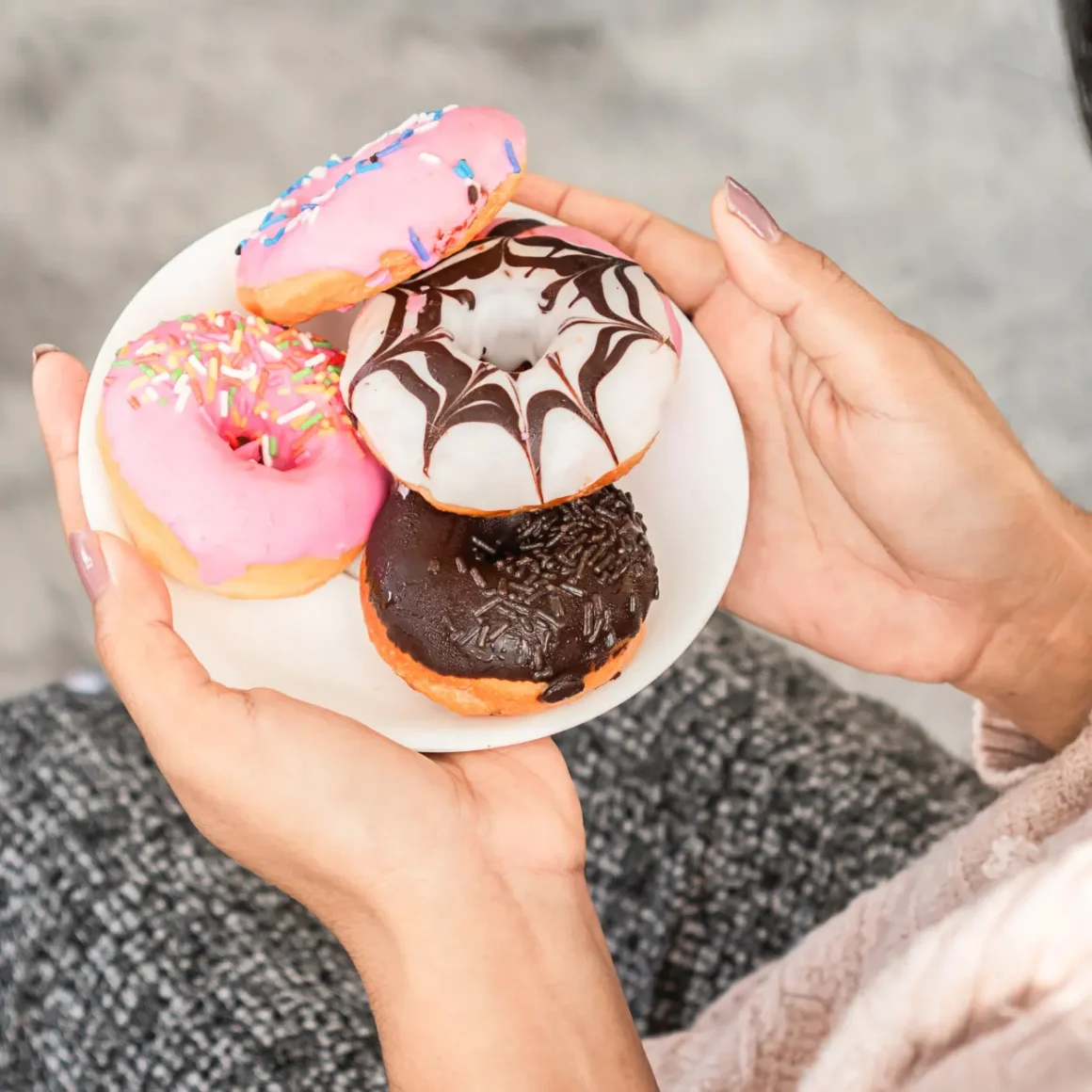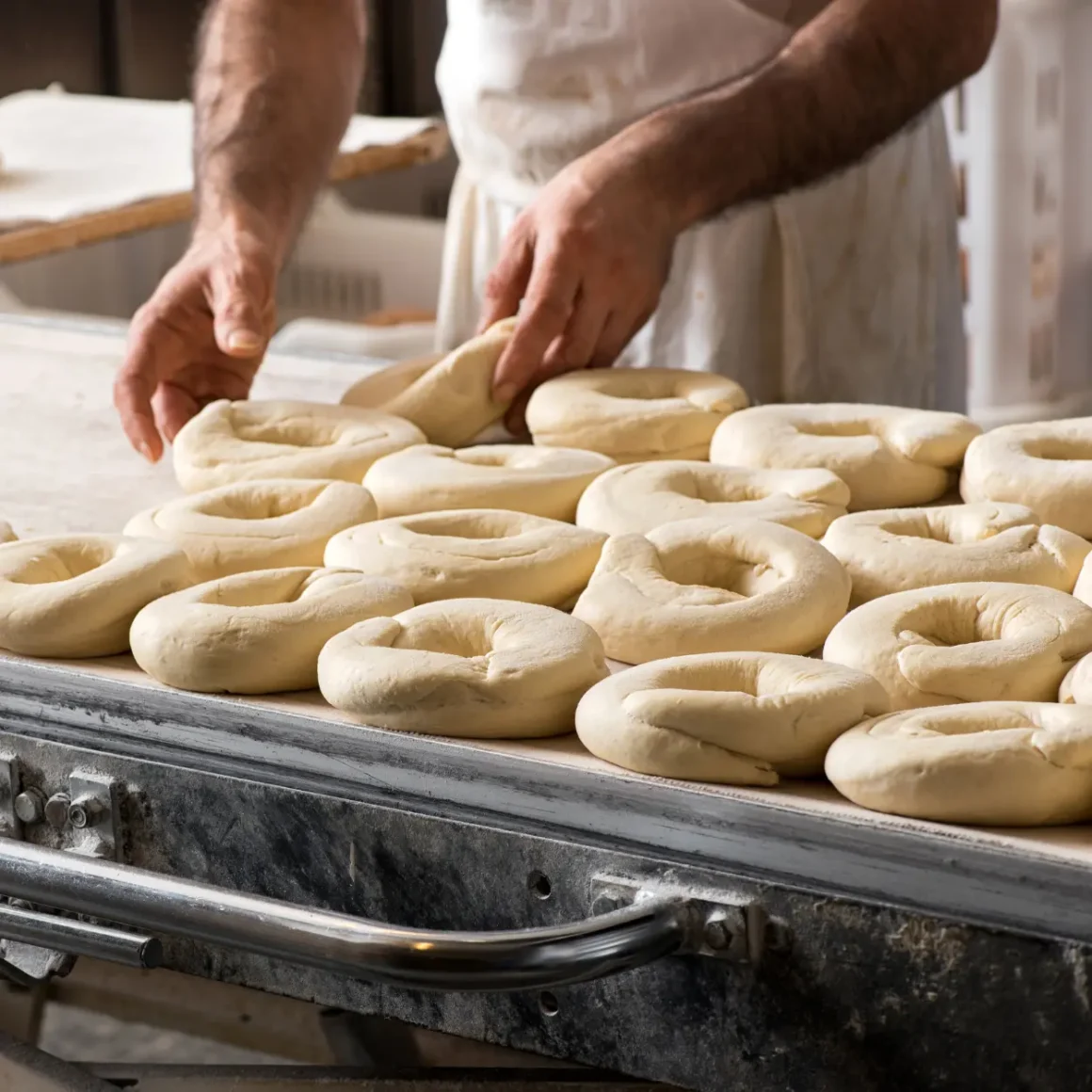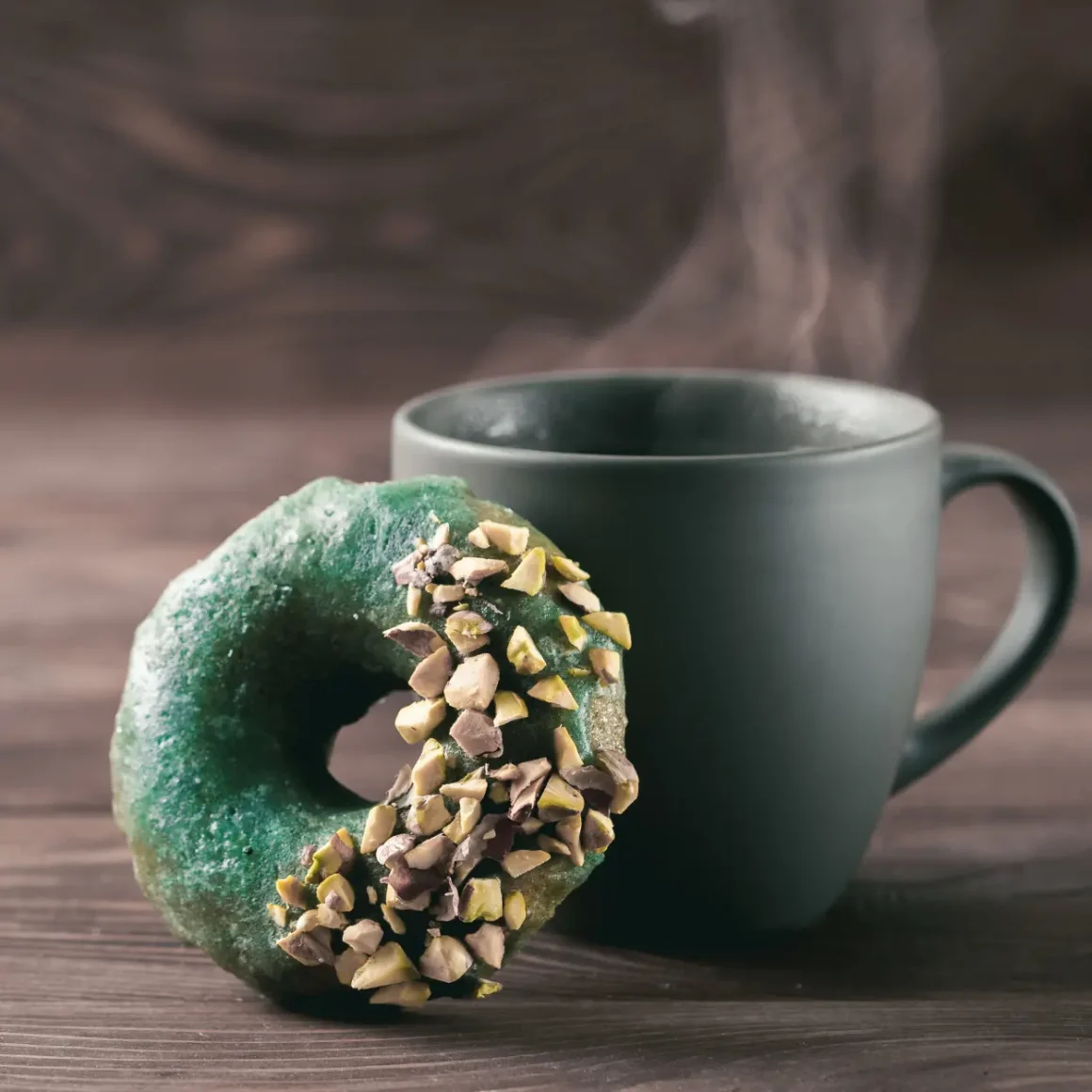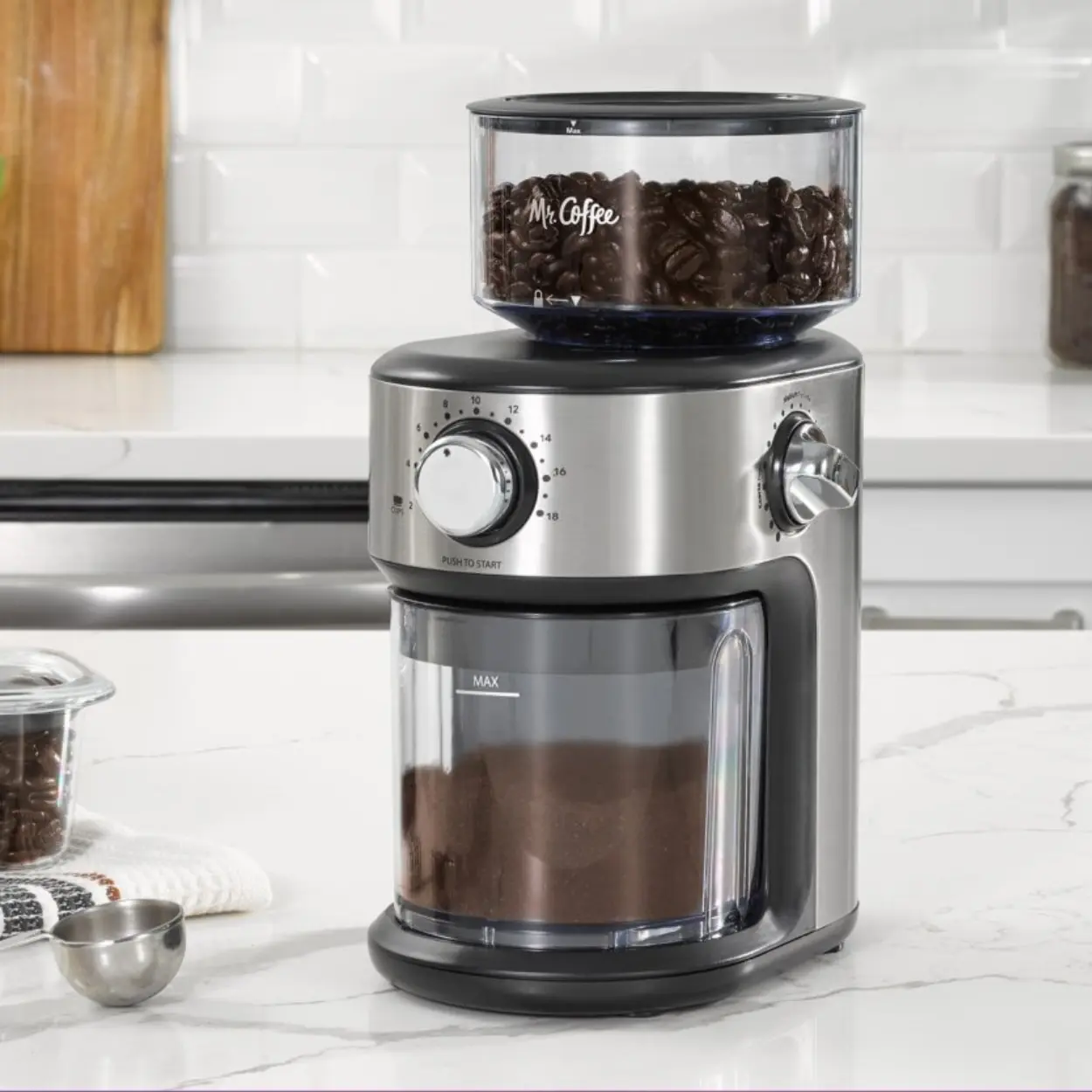The union of coffee and donuts transcends the simple bounds of a quick breakfast or afternoon pick-me-up. This seemingly unassuming combination has woven itself into the fabric of the North American lifestyle, tracing its roots across time and geography. Evolving far beyond popular coffee pairings, this duo has risen to become a cultural cornerstone, enjoyed in a variety of settings from specialized shops to the workplace. Through the pages of this article, we will journey from the initial origins of each component—coffee’s trek from Ethiopian fields to European parlors and the donut’s modest beginnings in Dutch immigrant kitchens—to their eventual and indelible partnership. So, sit back with your coffee and a donut as we embark on this flavorful exploration.
Coffee and Donuts: Key Takeaway
- The Art of Craftsmanship: Both coffee and donuts require a high level of skill and expertise in their creation, from roasting coffee beans to perfecting the dough and balance of flavors in a donut.
- Cultural Significance: The combo of coffee and donuts holds a special place in popular culture, frequently featured in iconic scenes in movies and television shows.
- Health Perspectives: While traditional donuts are often high in sugar and fats, there are healthier options available. Similarly, moderate coffee consumption has certain health benefits, making it more than just a morning pick-me-up.
- Future Trends: The industry is seeing a surge in specialty coffee shops and gourmet cafes, with an increasing focus on sustainability and innovative flavors.
- Everlasting Appeal: Regardless of new trends and health perspectives, the classic pairing of coffee and donuts continues to be a beloved combination, offering comfort, taste, and a sense of ritual to people around the world.
A Historical Dive into Coffee and Donuts

When it comes to breakfast or snack pairings that have stood the test of time, coffee and donuts hold a special place in North American culture. This iconic duo has roots that stretch back centuries and across continents. In this exploration, we’ll delve into how these two items became cultural staples.
The Origin of Coffee and its Journey to the West
The magical bean known as coffee has a history steeped in myth and commerce. Originating from Ethiopia, coffee plants slowly found their way to the Arabian Peninsula, specifically to Yemen, during the 15th century. From there, the beverage gained popularity and spread across the Islamic world, eventually reaching Europe in the 17th century. By the time coffee hit the New World, it had already captivated people from various walks of life.
- Ethiopian Beginnings: Coffee’s origins are traced back to Ethiopia, where legend has it a goat herder discovered its stimulating effects. (1)
- Arabian Expansion: Coffee houses, or “qahveh khaneh,” became social hubs in the Middle East.
- European Adaptation: Initially received with skepticism, coffee became integral to the European lifestyle, with coffee houses appearing in major cities.
Thus, coffee’s voyage to the Western world set the stage for its eventual partnership with another culinary delight: the donut.
The Humble Beginnings of the Donut

The modern doughnut, or donut as it’s also spelled, can trace its lineage to Dutch settlers in early America. These pioneers made simple fried pastries, originally referred to as “olie koeken” or “olykoeks,” which translates to “oil cakes.”
- Dutch Influence: Dutch immigrants in the early 18th-century New York prepared these fried dough pieces. (2)
- Evolution in Form: Though initially without the classic ring shape, the essence of the donut was present in these early “oil cakes.”
- Fun Fact: It’s highly likely that the term “oly koeks” was closely connected to the oliekoek, a Dutch treat made by frying sweetened cake batter in fat.
Over time, the doughnut underwent various transformations, ultimately acquiring its iconic ring shape and a myriad of flavors.
How Coffee Shops and Donuts Became Inseparable
While each has a rich history, it wasn’t until after World War II in North America that the two became an inseparable pair. Donut shops, being among the few establishments open late, would offer coffee and their sweet offerings to police officers in exchange for added security. This trend established the relationship we know today. (3)
- Post-War Establishment: The convenience of open-late donut shops attracted various patrons, including law enforcement officers.
- Mutual Benefit: Police officers often received coffee and donuts as a kind of informal payment for protection services.
- Modern-Day Norm: Now a staple, the pair is commonly enjoyed in both specialized shops and general coffeehouses, especially during workplace coffee breaks.
The harmonious relationship between coffee and donuts, now a staple in American life, continues to be a comforting presence in our daily routines.
To delve deeper into the world of Donut Shop Coffee, its distinctive blend, and what makes it stand out, we invite you to explore our comprehensive article on this beloved coffee variety.
The Craftsmanship Behind Every Cup and Bite

Behind the joy of enjoying donuts and coffee lies an intricate craft that often goes unnoticed. This craftsmanship isn’t just about the ingredients but also about the techniques, the timing, and the talent that culminates in these delightful experiences. Let’s delve into the nuanced craftsmanship that transforms raw ingredients into your favorite cup of coffee and that perfect donut.
The Art of Coffee Roasting and Brewing
Coffee is more than just ground beans and hot water; it’s a complex beverage that requires expertise at every stage. From selecting the right beans to roasting and brewing, the quality of each step influences the end product.
- Bean Selection: The type of coffee bean—Arabica, Robusta, or blends—plays a significant role in the flavor profile.
- Roasting Techniques: Whether light, medium, or dark roast, the roasting process is where the true character of the bean shines through.
- Brewing Method: From espresso to pour-over, the brewing process can significantly alter the coffee’s aroma, flavor, and texture.
Thus, the art of coffee-making is a finely calibrated process that combines science and sensory experience to create a memorable cup.
The Delicate Balance of Making the Perfect Donut

Creating a donut is not as simple as mixing flour, sugar, and yeast. It’s an intricate ballet of measurements, timing, and temperature to produce that ideal texture and flavor.
- Dough Consistency: The balance of wet and dry ingredients must be exact to achieve the desired fluffiness or density.
- Frying Temperature: Too hot and the donut becomes greasy; too low and it turns soggy.
- Flavor Innovations: Whether traditional sugar-glazed or exotic matcha-infused, the flavors should complement the dough’s base.
As with any culinary art, creating the perfect donut requires a harmonious blend of skill, precision, and a touch of creativity.
Flavor Pairings: Why Coffee and Donuts Complement Each Other

At first glance, pairing a beverage like coffee with something as sweet as a donut might seem counterintuitive. However, the match works exceptionally well due to the balance of flavors and textures.
- Contrasting Tastes: The bitterness of coffee perfectly offsets the sugary sweetness of donuts, creating a balanced taste experience.
- Texture Harmony: The smooth liquid quality of coffee pairs exceptionally well with the doughy or crumbly texture of donuts.
- Complex Flavors: Both coffee and donuts offer a range of flavors that can be matched to enhance the overall dining experience.
The pairing’s success lies in the delicate balance and interaction of flavors and textures, which turn a simple snack into a culinary delight.
Health and Nutritional Perspectives

While coffee and donuts have earned their spot as cultural icons, their nutritional impact often comes under scrutiny. The duo is usually pegged as a guilty pleasure, but it’s essential to dissect the health perspectives a bit more critically. The benefits and drawbacks of these beloved items are not as black and white as they may seem at first glance.
Health Benefits of Moderate Coffee Consumption
Coffee is more than just a morning pick-me-up; when consumed in moderation, it can offer several health benefits.
- Rich in Antioxidants: Coffee is a great source of antioxidants, which fight off free radicals in your body and may help prevent certain chronic diseases.
- Enhanced Cognitive Function: Caffeine, the main stimulant in coffee, can improve focus and problem-solving abilities, making you more alert.
- Mental Health Benefits: Some studies have shown that coffee consumption can lower the risk of depression and may even reduce the risk of suicide.
- Physical Performance: Caffeine increases adrenaline levels, which can enhance physical performance.
While excessive consumption can lead to jitteriness and sleep problems, moderate coffee intake can be a beneficial part of your daily routine.
The Sugar, Fats, and Myths About Donuts
Donuts are often criticized for their high sugar and fat content, but it’s important to debunk some myths surrounding this popular treat.
- Sugar Content: While it’s true that donuts contain sugar, not all are sugar bombs. Some varieties contain less sugar than certain breakfast cereals or fruit juices.
- Trans Fats: Older recipes used to include trans fats, but many modern donuts have switched to healthier oils.
- Caloric Intake: If you are mindful of portions—eating one donut instead of several—you are not necessarily ingesting an exorbitant amount of calories.
- Nutritional Variants: Some donuts incorporate whole grains, nuts, or fruit, adding a small but significant nutritional punch.
While donuts shouldn’t be your go-to daily snack, understanding their nutritional profile can help you enjoy them in moderation without excessive guilt.
Making Healthier Choices: Gourmet and Alternative Options
When it comes to balancing taste and health, you don’t have to completely forgo your morning rituals.
- Gourmet Coffee: Opt for freshly brewed coffee over sugary lattes and mochas to cut down on added sugars and fats.
- Donut Alternatives: Seek out donuts made from alternative flours like almond or coconut, which may offer more protein and fiber than traditional options.
- Sugar Alternatives: Some establishments now offer donuts sweetened with stevia or monk fruit as a healthier alternative to sugar.
- Smaller Portions: Consider ‘donut holes’ or ‘mini-donuts’ for portion control without sacrificing the experience.
With the rising popularity of gourmet and health-conscious options, you can still indulge in your favorite morning duo without compromising your nutritional goals.
The Future of Coffee and Donuts: Trends to Watch

The landscape of coffee and donuts is constantly evolving, thanks in part to consumer demands for better quality, greater variety, and increased sustainability. While the staples of black coffee and glazed donuts aren’t going anywhere, emerging trends are giving us an exciting peek into the future of these two classic comfort foods.
The Rise of Speciality Coffee Shops and Gourmet Cafes
In recent years, the emergence of specialty coffee shops and gourmet donut stores has marked a significant shift in consumer tastes.
- Artisanal Experience: Customers are increasingly seeking a more refined culinary experience, leaning towards single-origin coffees and handcrafted donuts with high-quality ingredients.
- Niche Markets: These establishments often cater to specific niches, be it vegan donuts or exotic coffee brews, offering something unique that big chains like Tim Hortons Coffee can’t.
- Quality Over Quantity: Unlike traditional fast-food outlets, these businesses focus on the quality of each cup and bite, often sourcing local ingredients and promoting an artisanal aesthetic.
The demand for specialty coffee and gourmet donuts is not just a fad but a reflection of a more conscious and discerning consumer base.
Environmentally-Friendly Coffee and Sustainable Donut Production

Sustainability is no longer an option but a necessity, impacting even the realms of coffee and donuts.
- Eco-Friendly Packaging: Both sectors are increasingly adopting biodegradable or reusable packaging to cut down on waste.
- Sustainable Farming: The trend towards sourcing coffee beans from farms that use environmentally friendly practices is gaining momentum.
- Local Sourcing: Gourmet cafes are more frequently utilizing locally sourced ingredients, thereby reducing their carbon footprint.
As consumers become more eco-conscious, the industry is responding with greener practices that could redefine the way we consume coffee and donuts.
Innovative Flavors and Fusion Varieties on the Horizon
The future promises an exciting array of new flavors and fusion varieties, pushing the boundaries of what coffee and donuts can be.
- Culinary Fusions: Expect to see more exotic flavors like matcha, yuzu, or even spicy chilis making their way into both coffee drinks and donut glazes.
- Ethnic Influences: Global influences are seeping in, offering opportunities to sample Turkish coffee with a side of baklava-inspired donuts, for instance.
- Seasonal and Limited Editions: Limited-time offerings for holidays or seasons are gaining popularity, adding a sense of urgency and exclusivity to the experience.
As we move forward, innovation will continue to reshape our expectations, making the coffee and donut experience richer, more diverse, and incredibly intriguing.
Conclusion
As we’ve explored, the bond between coffee and donuts runs deep, shaping cultural experiences and morning rituals across the globe. We’ve delved into the craftsmanship that goes into making each cup of coffee and crafting each donut, revealing the artistry and skill involved. While these classic treats have iconic status in popular culture, featuring prominently in film and TV, they’re not just stuck in tradition. Indeed, health-conscious consumers have inspired the industry to rethink sugar and fats, leading to the creation of more nutritious options.
Notably, the landscape of coffee and a donut is under constant evolution, thanks to emerging trends like specialty coffee shops, gourmet cafes, and sustainable production methods. Innovations in flavors and fusion varieties are keeping the experience of enjoying this classic pairing fresh and intriguing. As we look to the future, one thing is clear: the world’s favorite morning combo is here to stay, and it’s only getting better.
FAQ
Are there any health benefits to consuming coffee?
Yes, moderate coffee consumption has been linked to a reduced risk of certain diseases and improved cognitive function.
How do gourmet donuts differ from regular ones?
Gourmet donuts often feature high-quality ingredients, unique flavors, and artisanal preparation methods, making them a healthier and more flavorful option.
What are the most iconic movies featuring coffee and donuts?
Some of the most memorable scenes featuring this combo can be found in films like "Full Metal Jacket" and "Boogie Nights," as well as TV shows like "The Simpsons."
Which countries consume the most coffee and donuts?
While exact figures can vary, the United States is a significant consumer of both coffee and donuts, followed by countries like Canada where Tim Hortons coffee and similar treats are popular.












